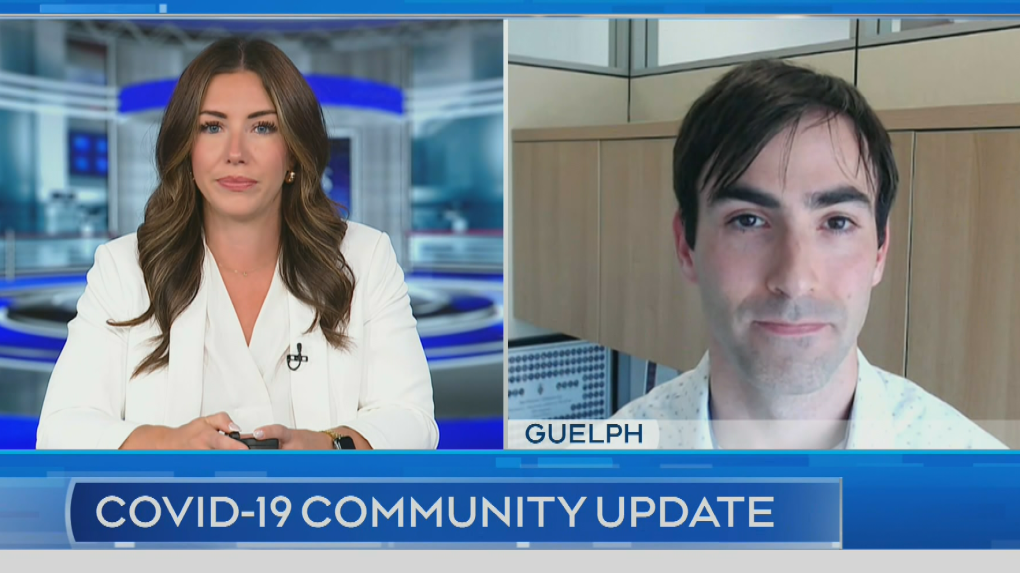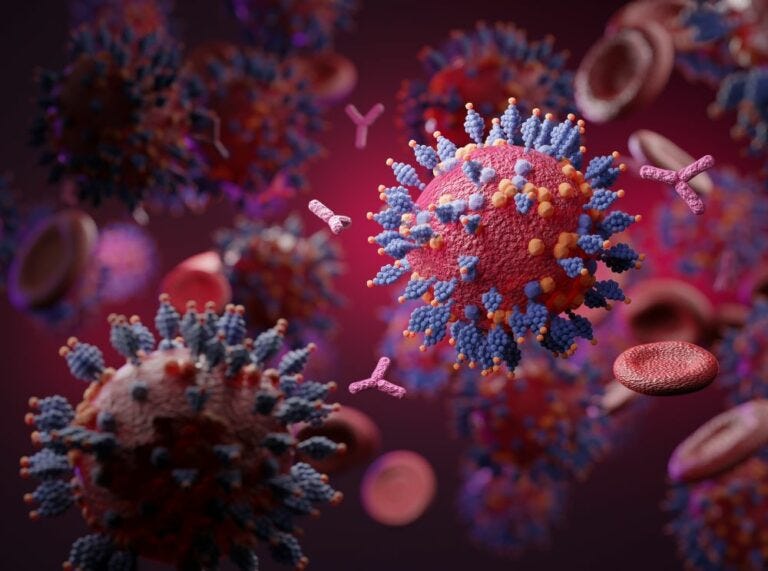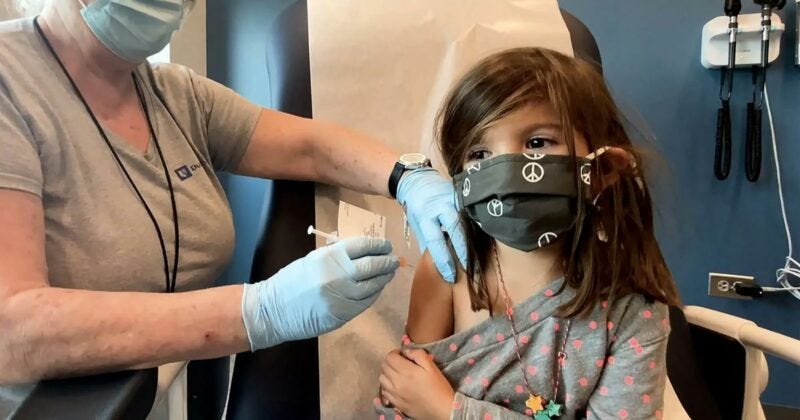Yommie
Elite Member
- Oct 2, 2013
- 64,104
- 37,185
- Country of Origin

- Country of Residence

- Thread starter
- #1,786

COVID surges across Kansas and Missouri as free shots go away
Money won’t stretch as far if the county chooses to offer the COVID shot
Mo. Independent: COVID surges across Kansas and Missouri as free shots go away
By Suzanne King Missouri
PUBLISHED 2:23 PM CT Aug. 15, 2024
Last year, when COVID vaccines were still free, barely one in five Americans rolled up their sleeves for the latest dose.
Now that some people will have to pay $100-plus for the shot, health officials expect even weaker demand when the next version of the vaccine comes out this fall.
Meanwhile, a surprisingly strong summer surge of COVID cases sweeps across Kansas and Missouri.
As students head back to school, more people are testing positive, ending up in emergency rooms and getting hospitalized with the virus, according to the U.S. Centers for Disease Control and Prevention.
In Kansas City, the reported case rate at the end of July was more than double the same week last year and edging toward last winter’s rate. At the same time, wastewater testing in Kansas and Missouri showed viral activity that surpassed national and regional levels.
Of course, the virus is nothing like it used to be. At the height of the pandemic in January of 2021, the CDC reported that almost 30% of weekly deaths in the U.S. could be attributed to COVID. For the week of Aug. 3, the disease was blamed for 1.5% of U.S. deaths.
But the picture would look quite different without the vaccine, experts said. At the same time, some health professionals trace August’s surge to low vaccination rates last September and October.
“The urgency of COVID has obviously gone down,” said Cecelia Thomas, a health policy consultant with Washington-based Venn Strategies. “People are now getting it or they’re seeing people get it and it’s like a cold. Not even a bad cold. But I don’t think they’re realizing that it’s not as bad because they are vaccinated.”
Immunity wanes over time as the virus mutates. Getting an updated COVID shot every year, doctors advise, helps your immune system keep pace with changes. But last year, as life seemed to have returned to normal for most people, many Americans took a pass on the COVID shot.
At the start of December, the height of vaccine season, only 16% of adults had gotten the updated shot. The rate had only ticked up to 22.5% by the middle of May.
Surprise summer surge
Scientists have come to expect a summer rise in COVID cases because the virus is cyclical, ebbing and waning in temperate climates as seasons change. But the current COVID surge has caught some health experts by surprise. It’s infecting more people and sending more patients to hospitals.Dr. William Schaffner, a professor of infectious diseases at Vanderbilt University Medical Center, blames the higher than expected number of cases on last year’s lackluster vaccination rates.
“Many of the people being hospitalized today did not receive the vaccine last fall,” he said.
Hospitals no longer report the number of patients admitted with COVID. But at least anecdotally, doctors say, they’re seeing more people getting sick with the virus. And some people most at risk are getting really sick.
Dr. Dana Hawkinson, an infectious-disease doctor at the University of Kansas Health System, said people should be aware of the current risk, especially if their age or underlying health puts them at higher risk for getting severely ill.
“Have a plan,” he said, “especially if you are at high risk.”
That can include wearing a mask in crowded places, being careful about hand hygiene, avoiding touching your eyes, nose and mouth when in public and, of course, getting up to date on your vaccine.
An updated COVID vaccine, recommended annually for anyone 6 months and older, can prevent severe illness and reduce the chances that you’ll end up with long COVID.
But getting a current vaccine is about to get a lot harder, especially for patients who are uninsured.
COVID vaccines will likely cost more this fall
During the height of the pandemic, COVID vaccinations were free to everyone. People only needed to sign up for an appointment online and walk into a nearby pharmacy. No cash needed.When the federal government lifted the Public Health Emergency in May of 2023, people covered by Medicare or Medicaid and most people with private insurance could still get the shot without paying a copay. People without insurance got free shots through the $1 billion federal Bridge Access Program.
That was meant to cover the gap so all COVID shots remained free through the end of 2024. In the meantime, the CDC promised to establish a new program to make sure uninsured adults could continue getting free COVID vaccines. It was to be modeled after the federal Vaccines for Children program, which pays for vaccines for minors whose families can’t afford them.
But that program hasn’t come to fruition. And, thanks to congressional budget cuts, funding for the Bridge Access Program is running out early. Meanwhile, people with private insurance may have to pay a copay to get the shot.
For someone without insurance, the shot can cost more than $100. The Johnson County Department of Health and Environment’s website lists the out-of-pocket cost for a COVID shot as $160.
Even when a shot is covered by insurance, many health departments charge an administration fee. In Johnson County and for the Wyandotte County Public Health Department, that amounts to $20 for COVID or any other vaccine.
Vaccine access will vary by health department
Public health officials around the Kansas City area are varied in how they plan to handle the lack of federal funding for COVID shots.The Wyandotte County Public Health Department won’t offer any free COVID vaccines for adults this fall. Jackson County Public Health has allocated American Rescue Plan funds to cover the cost of offering free vaccines to uninsured adults through the end of the year. And Platte County is weighing how to allocate expected state funding for COVID and flu vaccines.
Money won’t stretch as far if the county chooses to offer the COVID shot, which is much more costly than the flu vaccine, said Aaron Smullin, Platte County Health Department spokesman.
“We are evaluating data on COVID/flu hospitalizations and deaths to decide how to allocate our resources,” Smullin wrote in an email response. “Without current (Bridge) funding, we face the difficult choice of whether to immunize 500 people against flu or 125 against COVID.”
Public health officials fear that any added expense and complication will lead many people to forego the shot again this fall. And that could mean more infections and hospitalizations during future a COVID surge.
The current strains of COVID infecting most people this summer — known as FLiRT variants — are related to Omicron, the version of the virus that swept across the world in late 2021. The variants are highly contagious and spread readily.
They are also still mild for most people who test positive. That’s because most people have immunity, either from previous infections or from getting the vaccine. But the evolving virus could still become more dangerous again, scientists said, which is why vaccines are so important.
“These vaccines have saved millions of lives around the world, including in the United States,” Schaffner said. “But you can’t get protected if the vaccine is in the refrigerator. It’s got to be in your arm to work.”
In addition to getting vaccinated, public health officials warn that people should test if they have symptoms and isolate and take other precautions like wearing a mask to avoid spreading the virus if they get sick. When someone tests positive, a doctor can prescribe an antiviral medication to prevent severe disease.
No-cost testing is still available at some pharmacies for people without insurance who have been exposed to COVID or have symptoms. And people who are infected, can apply for free access to antiviral medication treatments like Paxlovid.
















